La Rioja
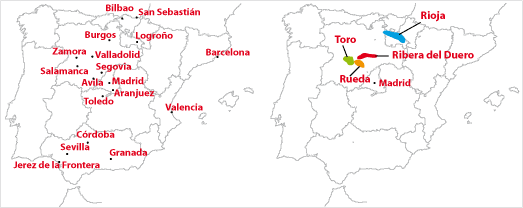
Rioja, located in the center north of Spain, is one of the five best-known and most prestigious wine producing regions in the world. Rioja is famous for its elegent red wines of great fragrance and ageing potential. It is one of Spain’s two appellations with the elevated status of Denominación de Origen Calificada (DO Ca).
Vine Cultivation and Wine Making
Rioja’s world-renowned wines are the result of centuries of wine making tradition. The region boasts archaelogical remains of wine presses and wine cellars which date back to the Romans. During the Middle Ages, Rioja’s wine industry grew around the numerous monasteries that were founded along the Way of St. James.
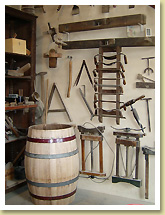
The great transformation of Riojan wine began in the 19th century when the region unexpectedly benefited from the misfortunes of French winemakers, first in 1840 when powdery mildew hit French vineyards, and again in the late 1860s during the phylloxera epidemic. Large numbers of French vintners and winemakers came to the Rioja in search of new wine supplies. Many new wineries were built and the Bordeaux production method took over. Two of Rioja’s most eminent wineries, Marqués de Murrieta and Marqués de Riscal, were also founded during this period.
In 1926, Rioja set the benchmark for quality standards by creating Spain’s first Consejo Regulador. Rioja later underwent yet another significant change in the 1970s and 1980s when major investment was made in the area. Exisiting wineries upgraded to modern equipment and a host of new wineries were built. In 1991, DO Rioja was promoted to Denominación de Origen Calificada (DO Ca), a classification reserved for regions that have consistently demonstrated high quality standards for many years.
Contemporary Rioja is an intriguing mix of tradition and modernity. There is every type of wine making facility imaginable, from the most traditional to the “boutique.” And in the last few years, several major producers have built ultra-modern wineries displaying stunning architectural design.
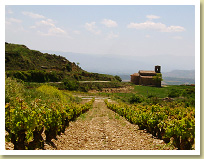
Rioja is predominately known for its red wines, although it also produces some whites and rosés. Traditional Rioja wine, and the style most widely known, is blended with at least three grapes. The august Tempranillo, native to the region, is the dominant grape and provides the backbone of blended wines. The majority of these wines are blended from various vineyards and districts to create the unique style of each individual winery.
Throughout its history,the wines of Rioja have continued to evolve and there is now a rich variety of wine styles produced in the DO Ca. With such a large number of wineries and production methods, contemporary Rioja defies a single categorization. In addition to its traditional blended wines, many of which have shifted the emphasis from oak to fruit, Rioja also now produces: young reds via carbonic maceration; organic wines; varietals; and single estate wines.
Wine made in Rioja is subject to stringent control throughout the wine making and ageing process. Wines are required by law to be aged in 225-litre oak barrels, followed by a further period of bottle ageing, and are classified into three categories: Crianza (12 months in the barrel, one year in the bottle), Reserva (12 months in the barrel, two years in the bottle), and Gran Reserva (24 months in the barrel, three years in the bottle).
Natural Beauty and Cultural History
The Rioja offers much more to its visitors than excellent wine. It is a fascinating region to visit, a wonderland of stunning landscapes and unspoiled villages, replete with art, culture and history. Just driving through the countryside, with its vast sweeps of vineyards and spectacular mountain scenery, is a delight. There is an amazing number of charming villages scattered throughout the region, each worthy of exploration. The medieval hamlet of Laguardia, and the hilltop villages of Briones, San Vicente de la Sonsierra and Elciego are only a few examples.
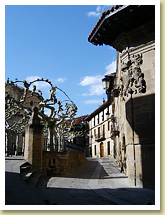
The famous pilgrim route, Camino de Santiago (Way of St. James), passes through the region, and is one of the Rioja’s major attractions. It has left a rich legacy of monuments, such as the remarkable Yuso and Suso monasteries which are located in San Millán de la Cogolla. The town of Santo Domingo de la Calzada, a key stop on the Way of St. James, has a splendid cathedral, and its historic quarter still maintains the aura of medieval times.
The bustling towns of Haro and Logroño are also worth a visit. Haro has been the center of Rioja´s viticultural activity for centuries. Some of the region´s most historic wineries are clustered together in the Barrio de la Estación (railway station quarter). In the town center is the lovely Plaza Mayor and an inviting collection of local wine shops. Logroño, the capital city of the province of La Rioja, offers great shopping opportunities and a vibrant nightlife scene. Located in the old quarter, the Calle Laurel is known for its abundance of excellent tapas bars, each serving up its own delicious specialties.
Rioja is also now home to a buzzing architectural scene with wineries sporting designs by Santiago Calatrava, Frank Gehry, Iñaki Aspiazu, Phillippe Mazières and Zaha Hadid.
Facts for the Oenophile
Located in the center north of Spain, the Rioja stretches through the Ebro river valley and is superbly positioned between two mountain ranges, the Sierra de Cantabria and the Sierra de la Demanda. Rioja is divided into three subzones. Rioja Alta occupies part of the Ebro valley west of Logroño. Rioja Alavesa lies north of the river Ebro and is in the Basque province of Alava. Rioja Baja extends south and east of Logroño.
Vineyard area: more than 57,000 hectares / 140,850 acres
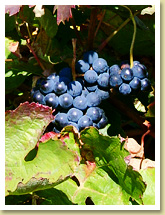 Principal vine variety: Tempranillo (61%)
Principal vine variety: Tempranillo (61%)
Other varieties: reds - Garnacha, Mazuelo, Graciano
whites - Viura, Malvasia, white Garnacha
Authorized yield: red - 45.5 hl/ha white - 63 hl/ha
Wines produced within the DO:Primarily red, some rosé and white. Joven, Crianza, Reserva and Gran Reserva. For aged red wines, the minimum requirements are: Crianza (12 months in the barrel, one year in the bottle); Reserva (12 months in the barrel, two years in the bottle); and Gran Reserva (24 months in the barrel, three years in the bottle).
Wine alcohol content: red: min. 11.5% abv
white: min. 10.5% abv
rosé: min. 10.5% abv
Annual production: 269.695.002 litres (2005)
Average annual sunshine 2,800 hours
| zone | vineyard area | altitude | soil |
|---|---|---|---|
| Alta | 24.457 ha (60.434 acres) | 400-500 m (1.312-1.640 feet) | calcareous clay, some ferruginous clay and alluvial soils |
| Alavesa | 12.050 ha (29.776 acres) | 400-500 m (1.312-1.640 feet) | calcareous clay |
| Baja | 20.907 ha (51.662 acres) | 300 m (984 feet) |
ferruginous clay and alluvial soils |
| zone | avge. annual rainfall | avge. temperature | climate |
|---|---|---|---|
| Alta | 450 mm (17,7 inches) |
12.8°C (55°F) | Atlantic |
| Alavesa | 450 mm (17,7 inches) |
12.8°C (55°F) | Atlantic and Mediterranean |
| Baja | 370 mm (14,5 inches) |
13.9°C (57°F) | Mediterranean |